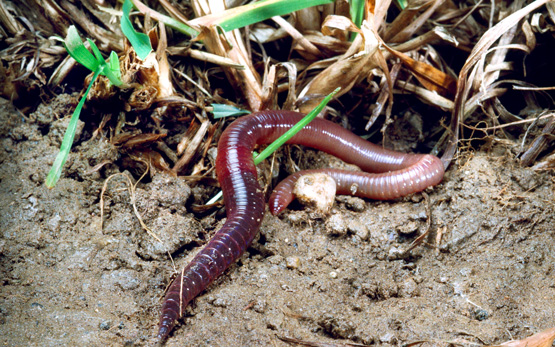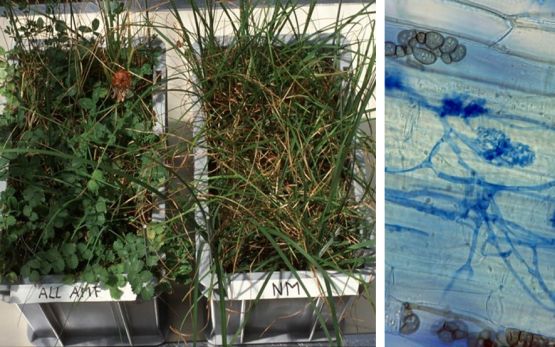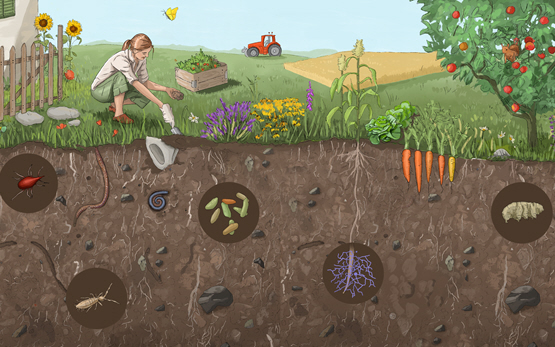
A wide variety of creatures live in the soil: invertebrates as well as bacteria and fungi. Besides improving soil structure and composition, they can be of direct benefit to crops by making nutrients available to them or by attacking pathogens.
Earthworms are probably the best known soil-dwellers, and are considered key organisms for healthy soils, but they are far from being the only soil-dwelling beneficials. Various other invertebrates such as woodlice, springtails and mites are also important elements of a healthy nutrient cycle. Microorganisms such as fungi and bacteria go even further – some, like mycorrhizal fungi, improve plant growth directly by absorbing nutrients and passing them on to the plant roots; others attack pathogens, thereby keeping crops healthy.
For healthy plant growth and a good harvest, it is important to encourage these beneficials. This can be done by:
- reducing disturbances, and limiting interventions in the soil, such as ploughing, to the strictly necessary.
- keeping the soil covered with plants, since a soil with good root penetration is better protected against compaction and erosion, as well as providing soil organisms with a basic food resource.
- optimising the rotation, thereby maintaining or even improving the high diversity of soil organisms.
- cultivating plants that actively promote soil life by bringing nutrients into the soil. Grass-clover meadows are veritable mycorrhizal fungi-boosters.
- leaving crop residues on the field, or otherwise adding organic material to build up organic matter and ‘feed’ soil organisms.
- avoiding chemical-synthetic plant-protection products which could disturb natural cycles.
Such pro-soil measures pay in the long run: All of the beneficial soil-dwellers perform a valuable service, free of charge, in favour of a healthy soil which even in times of climate change delivers vigorous plants and good harvests.
Publikation
Contact
Further Information
Last modification 16.09.2022







